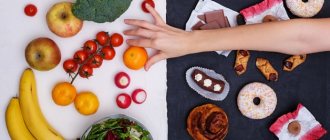General description of the disease
The term angina pectoris refers to a form of ischemic heart disease (coronary heart disease) that occurs due to an insufficient amount of blood in its cavity. Angina pectoris differs from myocardial infarction in that during an attack of pain in the sternum, no changes occur in the heart muscle. While during a heart attack, necrosis of cardiac muscle tissue is observed. The popular name for angina is angina pectoris.
Causes of angina
- Insufficiency of cardiac circulation at any given moment, for example, when performing physical activity.
- Atherosclerosis of the heart arteries, that is, narrowing of the arteries, due to which they are not able to pass the required volume of blood through themselves.
- Arterial hypotension is a decrease in blood flow to the heart.
Symptoms
The surest sign of angina is a pulling, squeezing or even burning pain in the sternum. It can radiate (give) to the neck, ear, left arm. Attacks of such pain can come and go, although usually their occurrence is determined by certain circumstances. Patients may also experience nausea and heartburn. The difficulty of making a correct diagnosis lies in the fact that people who experience pain in the ear or other parts of the body do not always associate it with angina attacks.
It is important to remember that angina is not pain that goes away on its own after half a minute or after a deep breath or a sip of liquid.
General rules
Angina pectoris is a variant of the course of coronary heart disease , and is characterized by the appearance of discomfort or pain in the chest. Attacks of pain are associated with transient myocardial ischemia that occurs at the height of the load. At this time, the myocardial need for oxygen increases, but due to the narrowing of the coronary vessels, its delivery deteriorates. Narrowing is most often associated with atherosclerosis . In the coronary arteries, lipidosis (the initial stage of atherosclerosis) develops already at 10-15 years of age.
Angina symptoms, treatment and nutrition
In most cases, attacks appear against the background of physical stress (emotional), after eating or in cold weather, when walking against the wind, leaving a warm room in the cold. In addition, certain conditions ( hypertension , hypertrophic cardiomyopathy , aortic stenosis ) can also cause attacks.
The main symptom of angina is chest discomfort or pain, which can be mild and not cause concern, or severe, manifested as intense compression in the precordial area. The pain may radiate to the shoulder and left arm. You may experience pain in the lower jaw, back, or throat. Sometimes the discomfort is localized in the abdomen (in its upper part) and shortness of breath occurs.
Some patients experience atypical symptoms: bloating, dyspeptic symptoms , gas formation . At the height of the attack, an increase in heart rate and pressure are observed. Typically, attacks resolve with rest or after taking nitroglycerin .
Treatment may include antiplatelet drugs, nitrates, calcium channel blockers, beta blockers, and statins. Nutrition is of no small importance in this disease. An increase in cholesterol and LDL fractions in the blood leads to the progression of atherosclerosis and narrowing of the lumen of blood vessels.
The diet for angina pectoris is aimed at slowing the progression of atherosclerosis. It is aimed at eliminating lipid metabolism disorders, weight loss and improving blood circulation.
General principles of nutrition:
- Reducing animal fats and carbohydrates (easily digestible). When cooking, you need to trim off the fat, remove the fat rendered during cooking and remove the skin from the bird. The degree of restriction of fats and carbohydrates depends on the patient’s weight.
- Normal protein content.
- Restriction of salt (4 g), cholesterol (0.3 g) and extractives.
- The content of linoleic acid, lipotropic substances, dietary fiber, potassium and magnesium has been increased due to an increase in vegetable oils, seafood, vegetables, fruits and cottage cheese in the diet.
- Increasing the proportion of products containing iodine (seaweed, mussels, sea fish, squid, shrimp).
- Exclusion of products that stimulate the cardiac and nervous systems (coffee, tea, alcohol, cocoa).
- Meals 5 times a day, in small portions.
All products of animal origin contain cholesterol, but there are products with a high content of it, so-called “cholesterol concentrates”: brains, mayonnaise, margarine, offal, egg yolk.
As it turned out, the danger is not the cholesterol that comes with food, but the lack of the required amount of fiber in food (vegetables, fruits, bran). In this regard, the diet provides for an increase in the proportion of plant foods in the diet. Refined carbohydrates (sugar, flour products, sweets, potatoes and any baked goods) contribute to the progression of atherosclerosis, so they are strictly limited.
general characteristics
The diet helps improve blood circulation, function of the cardiovascular system, liver and kidneys, normalize metabolism, and spare the cardiovascular system and digestive organs.
General characteristics:
a slight reduction in calories due to fats and partly carbohydrates. Significantly limiting the amount of sodium chloride, reducing fluid intake. The content of substances that excite the cardiovascular and nervous systems, irritate the liver and kidneys, unnecessarily burden the gastrointestinal tract, and promote flatulence is limited. The content of potassium, magnesium, lipotropic substances, and products that have an alkalizing effect has been increased. Cooking with moderate mechanical gentleness. Meat and fish are boiled. Avoid hard-to-digest foods. Food is prepared without salt. The food temperature is normal.
Chemical composition and calorie content:
- carbohydrates - 350-400 g,
- proteins - 90 g (55-60% animals),
- fats - 70 g (25-30% vegetable),
- calories - 2500-2600 kcal,
- table salt - 5 g (on hands),
- free liquid - up to 1.5 l.
Diet:
5 times a day in relatively even portions.
Authorized Products
- Wheat bread, grade II, grain, with bran, rye. Homemade baked goods with wheat bran and no salt.
- Refractory fats are excluded and half the amount of fats is replaced with vegetable oils.
- Vegetarian soups, you can prepare cabbage soup, beetroot soup, fruit soup and limited cereal soup, excluding rice and semolina.
- Meat, fish and poultry only of low-fat varieties, boiled or baked. Baking is done after preliminary boiling. Preference is given to fish and seafood dishes. Be sure to eat seaweed every day.
- Cabbage of all types, carrots, beets, zucchini, pumpkin, eggplant, potatoes (limited due to carbohydrate content) and green peas. You need to eat a large amount of vegetables fresh, and in case of gastrointestinal pathology, boiled and baked.
- Low-fat dairy products and fermented milk drinks, sour cream - limited for dressing dishes.
- Cereals (it is advisable to limit or exclude rice and semolina) are boiled in water and milk; you can make puddings and cereals with cottage cheese and vegetables. If you are overweight, avoid pasta.
- Eggs up to 3 per week (whole) and an egg white omelet.
- Any fruits and berries in raw form, in compotes, jellies, to which it is allowed to add a minimum of sugar or replace it with xylitol.
- Weak tea with milk, chicory drink, coffee drinks, vegetable juices, diluted berry and fruit juices. Daily use of rosehip infusion and wheat bran decoction.
- Low fat butter and vegetable oils.
- Any nuts in their natural form, but their high calorie content should be taken into account.
Table of permitted products
| Proteins, g | Fats, g | Carbohydrates, g | Calories, kcal | |
Vegetables and greens | ||||
| greenery | 2,6 | 0,4 | 5,2 | 36 |
| eggplant | 1,2 | 0,1 | 4,5 | 24 |
| beans | 6,0 | 0,1 | 8,5 | 57 |
| zucchini | 0,6 | 0,3 | 4,6 | 24 |
| cabbage | 1,8 | 0,1 | 4,7 | 27 |
| broccoli | 3,0 | 0,4 | 5,2 | 28 |
| boiled cauliflower | 1,8 | 0,3 | 4,0 | 29 |
| bulb onions | 1,4 | 0,0 | 10,4 | 41 |
| carrot | 1,3 | 0,1 | 6,9 | 32 |
| cucumbers | 0,8 | 0,1 | 2,8 | 15 |
| salad pepper | 1,3 | 0,0 | 5,3 | 27 |
| salad | 1,2 | 0,3 | 1,3 | 12 |
| beet | 1,5 | 0,1 | 8,8 | 40 |
| celery | 0,9 | 0,1 | 2,1 | 12 |
| soybeans | 34,9 | 17,3 | 17,3 | 381 |
| asparagus | 1,9 | 0,1 | 3,1 | 20 |
| tomatoes | 0,6 | 0,2 | 4,2 | 20 |
| Jerusalem artichoke | 2,1 | 0,1 | 12,8 | 61 |
| pumpkin | 1,3 | 0,3 | 7,7 | 28 |
| beans | 7,8 | 0,5 | 21,5 | 123 |
| garlic | 6,5 | 0,5 | 29,9 | 143 |
| lentils | 24,0 | 1,5 | 42,7 | 284 |
Fruits | ||||
| avocado | 2,0 | 20,0 | 7,4 | 208 |
| oranges | 0,9 | 0,2 | 8,1 | 36 |
| pomegranate | 0,9 | 0,0 | 13,9 | 52 |
| grapefruit | 0,7 | 0,2 | 6,5 | 29 |
| pears | 0,4 | 0,3 | 10,9 | 42 |
| kiwi | 1,0 | 0,6 | 10,3 | 48 |
| lemons | 0,9 | 0,1 | 3,0 | 16 |
| mango | 0,5 | 0,3 | 11,5 | 67 |
| tangerines | 0,8 | 0,2 | 7,5 | 33 |
| nectarine | 0,9 | 0,2 | 11,8 | 48 |
| peaches | 0,9 | 0,1 | 11,3 | 46 |
| apples | 0,4 | 0,4 | 9,8 | 47 |
Berries | ||||
| gooseberry | 0,7 | 0,2 | 12,0 | 43 |
| Red currants | 0,6 | 0,2 | 7,7 | 43 |
| black currant | 1,0 | 0,4 | 7,3 | 44 |
Nuts and dried fruits | ||||
| nuts | 15,0 | 40,0 | 20,0 | 500 |
| cashew | 25,7 | 54,1 | 13,2 | 643 |
| sesame | 19,4 | 48,7 | 12,2 | 565 |
| flax seeds | 18,3 | 42,2 | 28,9 | 534 |
| fenugreek seeds | 23,0 | 6,4 | 58,3 | 323 |
| sunflower seeds | 20,7 | 52,9 | 3,4 | 578 |
Cereals and porridges | ||||
| buckwheat (kernel) | 12,6 | 3,3 | 62,1 | 313 |
| oat groats | 12,3 | 6,1 | 59,5 | 342 |
| cereals | 11,9 | 7,2 | 69,3 | 366 |
| millet cereal | 11,5 | 3,3 | 69,3 | 348 |
| barley grits | 10,4 | 1,3 | 66,3 | 324 |
Raw materials and seasonings | ||||
| honey | 0,8 | 0,0 | 81,5 | 329 |
Dairy | ||||
| skim milk | 2,0 | 0,1 | 4,8 | 31 |
| natural yogurt 2% | 4,3 | 2,0 | 6,2 | 60 |
Cheeses and cottage cheese | ||||
| cottage cheese 0.6% (low fat) | 18,0 | 0,6 | 1,8 | 88 |
| curd tofu | 8,1 | 4,2 | 0,6 | 73 |
Meat products | ||||
| beef | 18,9 | 19,4 | 0,0 | 187 |
| rabbit | 21,0 | 8,0 | 0,0 | 156 |
Sausages | ||||
| boiled diet sausage | 12,1 | 13,5 | 0,0 | 170 |
Bird | ||||
| chicken fillet | 23,1 | 1,2 | 0,0 | 110 |
| turkey | 19,2 | 0,7 | 0,0 | 84 |
Fish and seafood | ||||
| fish | 18,5 | 4,9 | 0,0 | 136 |
| squid | 21,2 | 2,8 | 2,0 | 122 |
| mussels | 9,1 | 1,5 | 0,0 | 50 |
| seaweed | 0,8 | 5,1 | 0,0 | 49 |
Oils and fats | ||||
| butter | 0,5 | 82,5 | 0,8 | 748 |
| linseed oil | 0,0 | 99,8 | 0,0 | 898 |
| olive oil | 0,0 | 99,8 | 0,0 | 898 |
| sunflower oil | 0,0 | 99,9 | 0,0 | 899 |
Non-alcoholic drinks | ||||
| mineral water | 0,0 | 0,0 | 0,0 | — |
| green tea | 0,0 | 0,0 | 0,0 | — |
| * data is per 100 g of product | ||||
Diet modifications
The “10 table” diet has several variations.
Diet "Table 10A"
The “Table 10A” diet is indicated for diseases of the cardiovascular system, accompanied by circulatory failure of stages II-III. The diet is aimed at maximum unloading of the cardiovascular system in case of its diseases in a state of decompensation.
General characteristics of the diet
similar to the “10 table” diet, however, the calorie content of the diet is reduced by reducing the amount of bread (which is given in the form of crackers), eliminating the first course and uniformly reducing proteins, fats and carbohydrates. The consumption of extractives and table salt is limited and the introduction of potassium and calcium into the body is increased. All dishes are prepared without salt, the food is pureed.
Chemical composition and energy value:
- proteins - 70 g,
- fats - 70 g,
- carbohydrates - 300 g,
- table salt is excluded,
- calorie content - 2000 kcal,
- free liquid - 600-800 ml.
Diet:
6 times a day.
Recommended and excluded foods are similar to the “10 table” diet.
Diet "Table 10I"
The indication for the Table 10I diet is acute myocardial infarction. The diet is prescribed to accelerate reparative processes in the myocardium, improve the function of the circulatory system as a whole, and normalize intestinal motor function.
General characteristics of the diet:
reduced calorie content, semi-liquid food, table salt is excluded, restriction of fluids, foods and dishes that cause flatulence.
First 2 days:
The need for food is small, the patient only receives 50 ml of water 7 times a day, and the liquid should not have an irritating effect on the digestive organs. This can be weak, warm, slightly sweetened tea, or a decoction of dried fruits.
From the third day to 7-10 days:
The weight of the daily diet is about 1700 g, free liquid - about 600 ml, proteins - 60 g, fats - 30 g, carbohydrates - 180 g, calorie content - about 1200 kcal. Food is given in small portions, pureed. Eating up to 7-8 times a day.
Subsequent days:
The diet is expanded, and by the end of the 2nd week the daily diet contains 70 g of protein, 60 g of fat, 200 g of carbohydrates, and 1600 kcal calories. The food is not pureed, increase the portion of bread and the amount of free liquid to 1000 ml.
Then the patient is transferred to the anti-atherosclerotic diet “Table 10C”.
Fully or partially limited products
- Avoid fatty meats, cooking fats, fatty poultry meat (duck, goose), meat and fish broths, sausages, canned food and all kinds of smoked meats.
- Kidneys, brains, fish roe, liver due to high cholesterol content.
- Puff pastry and pastry, pastries with cream.
- Fatty fish, canned fish, smoked fish.
- Fatty dairy products (cheese, curd mass, cream, cottage cheese, sour cream).
- Radishes, all types of radishes, sorrel, spinach, legumes and mushrooms in any form are excluded.
- The consumption of chocolate, ice cream, strong tea and coffee, grape juice, and cocoa is prohibited.
- Limit egg yolks, rice, semolina and pasta. For obesity - grapes, sugar, jam, raisins. Honey can be used in minimal quantities. If you are prone to flatulence, you should limit the consumption of milk, white cabbage and all legumes.
Table of prohibited products
| Proteins, g | Fats, g | Carbohydrates, g | Calories, kcal | |
Vegetables and greens | ||||
| radish | 1,2 | 0,1 | 3,4 | 19 |
| white radish | 1,4 | 0,0 | 4,1 | 21 |
| red radish | 1,2 | 0,1 | 3,4 | 20 |
| black radish | 1,9 | 0,2 | 6,7 | 35 |
| spinach | 2,9 | 0,3 | 2,0 | 22 |
| sorrel | 1,5 | 0,3 | 2,9 | 19 |
Fruits | ||||
| bananas | 1,5 | 0,2 | 21,8 | 95 |
Berries | ||||
| grape | 0,6 | 0,2 | 16,8 | 65 |
Mushrooms | ||||
| mushrooms | 3,5 | 2,0 | 2,5 | 30 |
Nuts and dried fruits | ||||
| raisin | 2,9 | 0,6 | 66,0 | 264 |
Cereals and porridges | ||||
| semolina | 10,3 | 1,0 | 73,3 | 328 |
| rice | 6,7 | 0,7 | 78,9 | 344 |
Flour and pasta | ||||
| pasta | 10,4 | 1,1 | 69,7 | 337 |
Confectionery | ||||
| jam | 0,3 | 0,2 | 63,0 | 263 |
| jam | 0,3 | 0,1 | 56,0 | 238 |
| candies | 4,3 | 19,8 | 67,5 | 453 |
| pastry cream | 0,2 | 26,0 | 16,5 | 300 |
| cookie | 7,5 | 11,8 | 74,9 | 417 |
Ice cream | ||||
| ice cream | 3,7 | 6,9 | 22,1 | 189 |
Cakes | ||||
| cake | 4,4 | 23,4 | 45,2 | 407 |
Chocolate | ||||
| chocolate | 5,4 | 35,3 | 56,5 | 544 |
Raw materials and seasonings | ||||
| mustard | 5,7 | 6,4 | 22,0 | 162 |
| mayonnaise | 2,4 | 67,0 | 3,9 | 627 |
Dairy | ||||
| milk 3.6% | 2,8 | 3,6 | 4,7 | 62 |
| milk 4.5% | 3,1 | 4,5 | 4,7 | 72 |
| cream | 2,8 | 20,0 | 3,7 | 205 |
| sour cream 25% (classic) | 2,6 | 25,0 | 2,5 | 248 |
Cheeses and cottage cheese | ||||
| cheese | 24,1 | 29,5 | 0,3 | 363 |
| cottage cheese 11% | 16,0 | 11,0 | 1,0 | 170 |
| cottage cheese 18% (fat) | 14,0 | 18,0 | 2,8 | 232 |
Meat products | ||||
| pork | 16,0 | 21,6 | 0,0 | 259 |
| pork liver | 18,8 | 3,6 | 0,0 | 108 |
| pork kidneys | 13,0 | 3,1 | 0,0 | 80 |
| pork fat | 1,4 | 92,8 | 0,0 | 841 |
| salo | 2,4 | 89,0 | 0,0 | 797 |
| beef liver | 17,4 | 3,1 | 0,0 | 98 |
| beef kidneys | 12,5 | 1,8 | 0,0 | 66 |
| beef brains | 9,5 | 9,5 | 0,0 | 124 |
Sausages | ||||
| smoked sausage | 16,2 | 44,6 | 0,0 | 466 |
| smoked sausage | 9,9 | 63,2 | 0,3 | 608 |
| sausages | 10,1 | 31,6 | 1,9 | 332 |
| sausages | 12,3 | 25,3 | 0,0 | 277 |
Bird | ||||
| smoked chicken | 27,5 | 8,2 | 0,0 | 184 |
| duck | 16,5 | 61,2 | 0,0 | 346 |
| smoked duck | 19,0 | 28,4 | 0,0 | 337 |
| goose | 16,1 | 33,3 | 0,0 | 364 |
Fish and seafood | ||||
| smoked fish | 26,8 | 9,9 | 0,0 | 196 |
| salted fish | 19,2 | 2,0 | 0,0 | 190 |
| Red caviar | 32,0 | 15,0 | 0,0 | 263 |
| black caviar | 28,0 | 9,7 | 0,0 | 203 |
| canned fish | 17,5 | 2,0 | 0,0 | 88 |
| cod (liver in oil) | 4,2 | 65,7 | 1,2 | 613 |
Oils and fats | ||||
| animal fat | 0,0 | 99,7 | 0,0 | 897 |
| cooking fat | 0,0 | 99,7 | 0,0 | 897 |
Non-alcoholic drinks | ||||
| instant coffee dry | 15,0 | 3,5 | 0,0 | 94 |
| black tea | 20,0 | 5,1 | 6,9 | 152 |
| * data is per 100 g of product | ||||
Forecast and prevention of angina pectoris
The basis for preventing angina pectoris is proper nutrition and exercise. The diet should consist of proteins, vegetable fats, and complex carbohydrates. The consumption of alcohol and trans fats (fast food) should be avoided. Give preference to white meat, fish and seafood.
Regular physical activity should be present in the life of every person, this could be swimming, team sports, fitness, running or just walking. Its intensity is determined by the person’s health status; if you have chronic diseases, you should consult your doctor about the types of physical activity acceptable to you.
If you follow all the doctor’s recommendations, angina pectoris can be controlled, but, unfortunately, most patients ignore lifestyle instructions, which can lead to a worsening of the condition.
Diet menu for angina pectoris (Diet)
5-6 meals a day are organized. For the whole day, 150 g of gray bread, 100 g of rye bread, 50 g of sugar (including sugar in dishes) and 20 g of butter are allowed. Food should be cooked without salt and then added. In order not to go beyond the permitted amount of salt, you need to exclude prepared meat products and cheeses that contain a large amount of salt.
Eat up to 500 g of fruits and vegetables daily. A large amount of dietary fiber is also found in bran, prunes, figs, gooseberries, dates, raspberries, cranberries, raisins and dried apricots. Somewhat less - in cereals, sweet peppers, carrots, eggplants, cabbage, oranges, quince, pumpkin.
It is necessary to maintain high-density cholesterol levels with omega-3 PUFAs. Enrich your diet with fenugreek and flax seeds, which help lower cholesterol levels. They can be ground in a coffee grinder and added regularly to food (their daily requirement is 2 g). Large amounts of omega 3 are found in walnuts, tuna, soy, mackerel, and herring.
First day
| Breakfast | oatmeal porridge; · vegetable salad with bran and olive oil; · barley coffee. |
| Lunch | · apple (juice). |
| Dinner | · vegetarian vegetable soup; · steamed meat balls; · vegetable stew; · bread made from whole grain flour; fruit (or compote). |
| Afternoon snack | · rosehip infusion (can be replaced with fruit). |
| Dinner | · baked fish; · vegetable salad with seaweed; · tea with milk. |
| For the night | · apples or kefir. |
Second day
| Breakfast | · protein omelet; · cottage cheese with apple and nuts; · weak green tea. |
| Lunch | · fruits in season. |
| Dinner | · soup with Brussels sprouts; · boiled chicken breast; · vegetables stewed with seaweed; · compote |
| Afternoon snack | · vegetable (fruit) juice. |
| Dinner | · baked hake; · vegetable salad with flaxseed oil; · rosehip juice. |
| For the night | apple or acidophilus. |
Menu for the week: what you can eat
Options for a weekly menu for each meal according to the “10 table” diet:
1st breakfast options:
- 1 soft-boiled egg, oatmeal with low-fat milk and weak tea without sugar;
- one egg omelette, rice porridge with low-fat milk and chicory coffee;
- dumplings (crumbs, 0.5 liters of milk, flour, 2 eggs and a little drained butter), carrot and beetroot compote;
- 1 soft-boiled egg, semolina porridge with low-fat milk, weak tea without sugar;
- omelette with tomatoes, buckwheat porridge without milk with a small piece of butter, dried fruit compote;
- dumplings according to the above recipe, rice porridge with milk, chicory coffee.
Options for 2nd breakfast:
- baked non-acidic fruits without sugar, 1 tsp. honey;
- pureed fruits;
- carrot pudding;
- baked fruits;
- unsweetened apple pie without crust.
Lunch options*:
- vegetable soup with a handful of pearl barley, a small steamed cutlet with a side dish of boiled and grated carrots, compote made from dried fruits;
- soup with chopped vegetables and fresh herbs, 100-150 grams of boiled beef with cauliflower, a glass of jelly;
- carrot-rice soup, 1 steamed chicken cutlet with a side dish of vegetables, fruit juice;
- potato soup, a small piece of oven-baked beef with boiled cauliflower and green beans, a glass of jelly;
- vegetable broth from pattisons and zucchini, steamed cutlet with a side dish of boiled vegetables, dried fruit compote;
- carrot soup with barley, a small steamed chicken cutlet with grated boiled carrots, fruit juice;
- vegetable broth with fresh herbs, a piece of skinless chicken breast with grated fresh vegetables, a glass of jelly;
*soups within 250-400 g per serving (about half the usual serving).
Afternoon snack options:
- rosehip decoction;
- dried fruits compote.
Dinner options:
- low-fat cottage cheese pudding, boiled fish with steamed vegetables, unsweetened tea;
- cottage cheese casserole with pieces of fruit, low-fat fish with a salad of fresh vegetables not prohibited by the diet;
- low-fat cottage cheese and fish dumplings with rice;
- pudding of cottage cheese and carrots, baked fish with a side dish of finely chopped vegetables;
- fresh cottage cheese, fish balls with cauliflower puree;
- cottage cheese casserole, stewed fish with a side dish of oven-baked zucchini.
Options for the night:
- a glass of low-fat kefir
From the above dish options you can create a varied diet for every day.
Choose the right food delivered to your home
Diet selection
Only for Moscow residents
Reviews and results
This therapeutic nutrition is designed for a long time and should become the rule of life for patients with cardiovascular diseases and high cholesterol levels. The diet takes into account all aspects of nutrition that cause the progression of the disease. Restricting carbohydrates and fats allows you to lose weight, normalize cholesterol and does not negatively affect your health. Patient reviews indicate an improvement in general condition, the appearance of vigor and activity. Many of them changed their lifestyle (excluded smoking and alcohol), included walking and began to actively control their weight.
- “...I liked this healthy diet. First of all, I lost weight, felt better and became healthier overall (for example, I didn’t get sick in winter). At the same time, pills were prescribed, including those to lower cholesterol. Another positive thing is that sugar levels have returned to normal, which in recent years have been at the upper limit of normal. I’m very pleased with the results”;
- “... Recently, pain in the heart area of a compressive nature has appeared, which I associate with weight gain, high blood pressure and psycho-emotional stress at work. This whole bouquet forced me to seriously examine myself and take care of my health. Cholesterol was high, changes on the ECG. First of all, they told me to lose weight, prescribed pills for high cholesterol and blood pressure, nitroglycerin, diet and dosed walking. My result for 5 months minus 6 kg is already good. It has become easier to walk and breathe, and my general condition has improved significantly, but the tests are still not normal. I continue to eat healthy - mostly vegetables and fruits, fish and seafood. Introduced a ban on all sweets and baked goods”;
- “...They diagnosed me with angina, prescribed pills and told me how to eat. It seems to me that this is just proper nutrition, which should have always been followed. It helped me lose weight and improve my condition. Now I’ve decided not to push myself, eat right and walk a lot, if exercise in the gym is prohibited.”
Methods for diagnosing angina pectoris
Treatment of angina begins with diagnosing the condition of the coronary vessels. For this purpose, procedures such as:
ECG
Electrocardiography (ECG) is a basic diagnostic procedure in cardiology. Patients with angina pectoris are also recommended to undergo daily ECG monitoring.
More information about the diagnostic method
Treadmill test
Exercise tests such as the treadmill test and bicycle ergometry are also widely used to diagnose heart conditions.
More information about the diagnostic method
Echocardiography
If cardiac abnormalities are detected, echocardiography (ultrasound of the heart) is performed.
More information about the diagnostic method
Coronary angiography
The condition of the coronary vessels is determined by coronary angiography (x-ray examination of the heart vessels with the introduction of a contrast agent).
More information about the diagnostic method
Blood chemistry
Laboratory diagnosis of angina pectoris involves, first of all, a biochemical blood test. Indicators such as cholesterol, hemoglobin, AST, ALT, and other indicators are assessed.
More information about the diagnostic method
Sign up for diagnostics To accurately diagnose the disease, make an appointment with specialists from the Family Doctor network.









